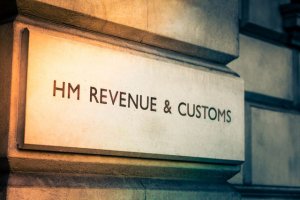- Corporate
- Mergers and acquisitions

Longer Reads
Shareholder actions under s90 / s90A FSMA 2000: how much loss can an investor recover?
Investors assessing whether and how they may be able to recover losses suffered in relation to a company that has (allegedly) been guilty of some form of wrongdoing and assessing whether to bring a claim or join a shareholder group action are likely to have a number of questions. One of the key questions from the outset will no doubt be: how much loss would I recover if the claim were to succeed?
4 minute read
Published 23 June 2020
Key information
- Specialisms
- Business
This article considers that question in the context of shareholder actions under Section 90 and Section 90A Financial Services & Markets Act 2000 (“FSMA 2000”).
Section 90 / Section 90A FSMA 2000
As a brief summary, Section 90 and Section 90A FSMA 2000 offer a potential route to redress for shareholders in listed companies who have suffered loss as a result of:
- untrue or misleading statements within, or omissions from, prospectuses or listing particulars (Section 90); or
- untrue or misleading statements within, or omissions from, other information published by the company, or as a result of a dishonest delay by the company in publishing information (Section 90A).
Sections 90 and 90A FSMA 2000 avoid the potential pitfall of the “reflective loss” principle that other types of shareholder claim may face. This principle states that shareholders may not sue for loss where it is merely reflective of a loss that was in fact suffered by the company itself; only the company may sue for this (either directly or through a derivative action). This principle exists to prevent defendants from facing two potential claims (one from the company, one from its shareholders) in respect of the same loss. For example, the judge in the recent Lloyds / HBOS shareholder claim[1] – which was brought on the basis of alleged breaches of director duties, rather than Section 90 / 90A FSMA 2000 – found the reflective loss principle to apply to the shareholders’ claims (even though, having already decided that the claims failed on other grounds, the judge dealt with this point swiftly and reached his conclusion “with some hesitation”).
Sections 90 and 90A FSMA 2000 however are clear in providing a route to redress for shareholders against the company. Assuming that the shareholder is able to successfully establish all other elements of the cause of action, then the statute says that the company must pay “compensation” to the shareholder. The obvious question then becomes: How much compensation? And how is this compensation to be calculated? Unfortunately, the statute is silent on these questions.
These statutory causes of action are so far largely untested before the courts. The RBS Right Issue litigation[2] (brought under Section 90 FSMA 2000) was due to go to trial in June 2017 but settled shortly beforehand. The Tesco litigation[3] meanwhile (brought under Section 90A FSMA 2000) is due to go to trial in October 2020. Until further case law emerges, the exact meaning of “compensation” will, unfortunately, remain uncertain.
In this article, we consider the different possible methodologies that a court might adopt for calculating an investor’s loss under Section 90 and 90A FSMA 2000, where the investor has bought the company’s shares in reliance on the company’s prospectus or other published information[4].
Is the fraud measure of damages available?
The methodology for calculating an investor’s loss will depend on whether the so-called “fraud measure of damages” is available.
The fraud measure of damages is available to claimants in deceit and fraudulent misrepresentation claims. Claims under Section 90A FSMA 2000 are in some ways analogous to deceit and fraudulent misrepresentation claims, as a claimant is required to prove conduct tantamount to dishonesty on the part of high-ranking individuals within the listed company in order to succeed in their claim. It would therefore seem appropriate for the fraud measure of damages to be available to successful claimants using this cause of action. Tesco are however disputing this in the Tesco litigation.
Claimants using Section 90 FSMA 2000, on the other hand, are not required to show any form of dishonesty on the part of the listed company. It is enough to show that the prospectus or listing particulars contained material untrue or misleading statements or material omissions. In this context, the fraud measure of damages is less likely to be available.
The “Left in Hand” methodology
A “Left in Hand” methodology might be available where the fraud measure of damage applies. This methodology seeks to put the claimant in the position that they would have been if they had not purchased the company’s shares.
This methodology, therefore, seeks the difference in value between (i) the price at which the claimant purchased the shares; and (ii) the price that was ultimately ‘left in the claimant’s hands’, either after the claimant sold the shares, or the current market price of the shares if the claimant has held onto them.
The benefit of this methodology is that a claimant will be theoretically able to recover the full drop in the company’s share price, even if part of this drop was unconnected with the subject matter of the untrue or misleading statement or omission that the claimant relied on. However, the claimant’s ability to do this might be limited by the need for it to explain, in the counterfactual scenario where it did not purchase the company’s shares, what else it would have done with the money. If, for example, the company is a property developer, and part of its price drop was caused by a general decline in the property market, then a claimant might only be able to recover this element of its loss if it can show that it would not have simply invested in another property company that would have been equally exposed to this element of the loss.
The “Inflation per Share” methodology
If the fraud measure of damages is not available, then it is likely that a claimant would seek to use an “Inflation per Share” methodology. This methodology seeks to put the claimant in the position that they would have been if they had still purchased the company’s shares, but in the counterfactual scenario where the company had not made any untrue or misleading statements or omissions.
This methodology, therefore, seeks the difference in value between (i) the price at which the claimant purchased the shares; and (ii) the ‘true value’ of those shares on the purchase date, i.e. what the price of the shares would have been had it not been for the company’s untrue or misleading statements or omissions. It, therefore, asks by how much the share price was ‘inflated’ by those statements or omissions.
Given its hypothetical nature, this can be a complex factual question, with no easy answer. It will usually be the subject of expert evidence. A typical method is for an expert to carry out an “event study analysis”, which studies the price movements seen on a particular date, for example the date that the falsity or omission was revealed to the market. It is usually difficult to isolate the effect on the price this cleanly, however. If the share price rose after the event, was this a price rise that would have occurred anyway that the claimant should retain the benefit of, or was it simply a correction to the initial price drop that the claimant should give credit for? Conversely, if the share price continued to fall, was this the continuing effect of the falsity or omission (as the claimant will say), or a price fall caused by other matters (as the defendant will say)? A judge is likely to face two contrasting expert analyses on these points during a trial, and may find it difficult to choose between them.
Which methodology will be better for an investor?
Generally, the “Left in Hand” methodology is likely to be more favourable to claimants. This will however depend on the circumstances of the case – for example, what has happened to the share price since the relevant events – and also on the individual circumstances of each claimant – for example, when did the claimant buy their shares, has the claimant now sold them, and if so, when.
It may be the case that, within a claimant group, one methodology would suit some investors, whereas other investors would prefer another. The claimant group will however need to adopt a consistent methodology in order to effectively present their case to the court. We recommend that investors thinking of joining a shareholder group action are alert to this as an issue, and if necessary seek independent advice.
[1] Sharp v Blank [2019] EWHC 3078 (Ch)
[2] Interim decisions in this case included, for example: The RBS Rights Issue Litigation [2017] Lloyd’s Rep PC 83; [2016] EWHC 3161 (Ch))
[3] Interim decisions in this case have so far included, for example: Omers Administration Corporation and others v. Tesco PLC; Manning & Napier Fund Inc. and another v. Tesco PLC [2019] EWHC 2858 (Ch)
[4] Section 90A FSMA 2000 may also be available to investors who decided to hold, or (rarely) to sell shares in reliance on the allegedly untrue or misleading information (or as a result of a dishonest delay in publishing information) but the loss methodologies in those instances will be different.
Related content
Longer Reads
Shareholder actions under s90 / s90A FSMA 2000: how much loss can an investor recover?
Investors assessing whether and how they may be able to recover losses suffered in relation to a company that has (allegedly) been guilty of some form of wrongdoing and assessing whether to bring a claim or join a shareholder group action are likely to have a number of questions. One of the key questions from the outset will no doubt be: how much loss would I recover if the claim were to succeed?
Published 23 June 2020
Associated sectors / services
This article considers that question in the context of shareholder actions under Section 90 and Section 90A Financial Services & Markets Act 2000 (“FSMA 2000”).
Section 90 / Section 90A FSMA 2000
As a brief summary, Section 90 and Section 90A FSMA 2000 offer a potential route to redress for shareholders in listed companies who have suffered loss as a result of:
- untrue or misleading statements within, or omissions from, prospectuses or listing particulars (Section 90); or
- untrue or misleading statements within, or omissions from, other information published by the company, or as a result of a dishonest delay by the company in publishing information (Section 90A).
Sections 90 and 90A FSMA 2000 avoid the potential pitfall of the “reflective loss” principle that other types of shareholder claim may face. This principle states that shareholders may not sue for loss where it is merely reflective of a loss that was in fact suffered by the company itself; only the company may sue for this (either directly or through a derivative action). This principle exists to prevent defendants from facing two potential claims (one from the company, one from its shareholders) in respect of the same loss. For example, the judge in the recent Lloyds / HBOS shareholder claim[1] – which was brought on the basis of alleged breaches of director duties, rather than Section 90 / 90A FSMA 2000 – found the reflective loss principle to apply to the shareholders’ claims (even though, having already decided that the claims failed on other grounds, the judge dealt with this point swiftly and reached his conclusion “with some hesitation”).
Sections 90 and 90A FSMA 2000 however are clear in providing a route to redress for shareholders against the company. Assuming that the shareholder is able to successfully establish all other elements of the cause of action, then the statute says that the company must pay “compensation” to the shareholder. The obvious question then becomes: How much compensation? And how is this compensation to be calculated? Unfortunately, the statute is silent on these questions.
These statutory causes of action are so far largely untested before the courts. The RBS Right Issue litigation[2] (brought under Section 90 FSMA 2000) was due to go to trial in June 2017 but settled shortly beforehand. The Tesco litigation[3] meanwhile (brought under Section 90A FSMA 2000) is due to go to trial in October 2020. Until further case law emerges, the exact meaning of “compensation” will, unfortunately, remain uncertain.
In this article, we consider the different possible methodologies that a court might adopt for calculating an investor’s loss under Section 90 and 90A FSMA 2000, where the investor has bought the company’s shares in reliance on the company’s prospectus or other published information[4].
Is the fraud measure of damages available?
The methodology for calculating an investor’s loss will depend on whether the so-called “fraud measure of damages” is available.
The fraud measure of damages is available to claimants in deceit and fraudulent misrepresentation claims. Claims under Section 90A FSMA 2000 are in some ways analogous to deceit and fraudulent misrepresentation claims, as a claimant is required to prove conduct tantamount to dishonesty on the part of high-ranking individuals within the listed company in order to succeed in their claim. It would therefore seem appropriate for the fraud measure of damages to be available to successful claimants using this cause of action. Tesco are however disputing this in the Tesco litigation.
Claimants using Section 90 FSMA 2000, on the other hand, are not required to show any form of dishonesty on the part of the listed company. It is enough to show that the prospectus or listing particulars contained material untrue or misleading statements or material omissions. In this context, the fraud measure of damages is less likely to be available.
The “Left in Hand” methodology
A “Left in Hand” methodology might be available where the fraud measure of damage applies. This methodology seeks to put the claimant in the position that they would have been if they had not purchased the company’s shares.
This methodology, therefore, seeks the difference in value between (i) the price at which the claimant purchased the shares; and (ii) the price that was ultimately ‘left in the claimant’s hands’, either after the claimant sold the shares, or the current market price of the shares if the claimant has held onto them.
The benefit of this methodology is that a claimant will be theoretically able to recover the full drop in the company’s share price, even if part of this drop was unconnected with the subject matter of the untrue or misleading statement or omission that the claimant relied on. However, the claimant’s ability to do this might be limited by the need for it to explain, in the counterfactual scenario where it did not purchase the company’s shares, what else it would have done with the money. If, for example, the company is a property developer, and part of its price drop was caused by a general decline in the property market, then a claimant might only be able to recover this element of its loss if it can show that it would not have simply invested in another property company that would have been equally exposed to this element of the loss.
The “Inflation per Share” methodology
If the fraud measure of damages is not available, then it is likely that a claimant would seek to use an “Inflation per Share” methodology. This methodology seeks to put the claimant in the position that they would have been if they had still purchased the company’s shares, but in the counterfactual scenario where the company had not made any untrue or misleading statements or omissions.
This methodology, therefore, seeks the difference in value between (i) the price at which the claimant purchased the shares; and (ii) the ‘true value’ of those shares on the purchase date, i.e. what the price of the shares would have been had it not been for the company’s untrue or misleading statements or omissions. It, therefore, asks by how much the share price was ‘inflated’ by those statements or omissions.
Given its hypothetical nature, this can be a complex factual question, with no easy answer. It will usually be the subject of expert evidence. A typical method is for an expert to carry out an “event study analysis”, which studies the price movements seen on a particular date, for example the date that the falsity or omission was revealed to the market. It is usually difficult to isolate the effect on the price this cleanly, however. If the share price rose after the event, was this a price rise that would have occurred anyway that the claimant should retain the benefit of, or was it simply a correction to the initial price drop that the claimant should give credit for? Conversely, if the share price continued to fall, was this the continuing effect of the falsity or omission (as the claimant will say), or a price fall caused by other matters (as the defendant will say)? A judge is likely to face two contrasting expert analyses on these points during a trial, and may find it difficult to choose between them.
Which methodology will be better for an investor?
Generally, the “Left in Hand” methodology is likely to be more favourable to claimants. This will however depend on the circumstances of the case – for example, what has happened to the share price since the relevant events – and also on the individual circumstances of each claimant – for example, when did the claimant buy their shares, has the claimant now sold them, and if so, when.
It may be the case that, within a claimant group, one methodology would suit some investors, whereas other investors would prefer another. The claimant group will however need to adopt a consistent methodology in order to effectively present their case to the court. We recommend that investors thinking of joining a shareholder group action are alert to this as an issue, and if necessary seek independent advice.
[1] Sharp v Blank [2019] EWHC 3078 (Ch)
[2] Interim decisions in this case included, for example: The RBS Rights Issue Litigation [2017] Lloyd’s Rep PC 83; [2016] EWHC 3161 (Ch))
[3] Interim decisions in this case have so far included, for example: Omers Administration Corporation and others v. Tesco PLC; Manning & Napier Fund Inc. and another v. Tesco PLC [2019] EWHC 2858 (Ch)
[4] Section 90A FSMA 2000 may also be available to investors who decided to hold, or (rarely) to sell shares in reliance on the allegedly untrue or misleading information (or as a result of a dishonest delay in publishing information) but the loss methodologies in those instances will be different.
Associated sectors / services
- Corporate
- Mergers and acquisitions
Need some more information? Make an enquiry below.
Enjoy reading our articles? why not subscribe to notifications so you’ll never miss one?
Subscribe to our articlesMessage us on WhatsApp (calling not available)
Please note that Collyer Bristow provides this service during office hours for general information and enquiries only and that no legal or other professional advice will be provided over the WhatsApp platform. Please also note that if you choose to use this platform your personal data is likely to be processed outside the UK and EEA, including in the US. Appropriate legal or other professional opinion should be taken before taking or omitting to take any action in respect of any specific problem. Collyer Bristow LLP accepts no liability for any loss or damage which may arise from reliance on information provided. All information will be deleted immediately upon completion of a conversation.
Close



















































